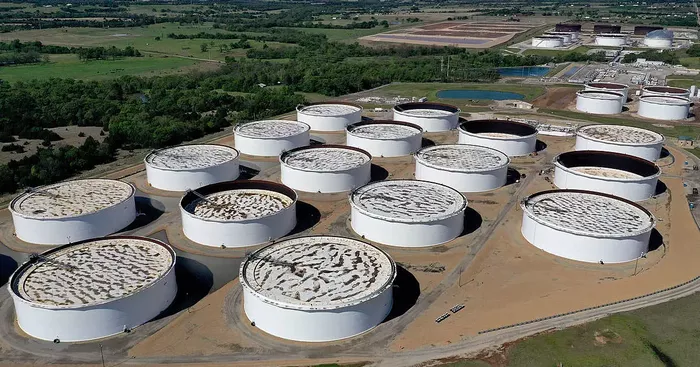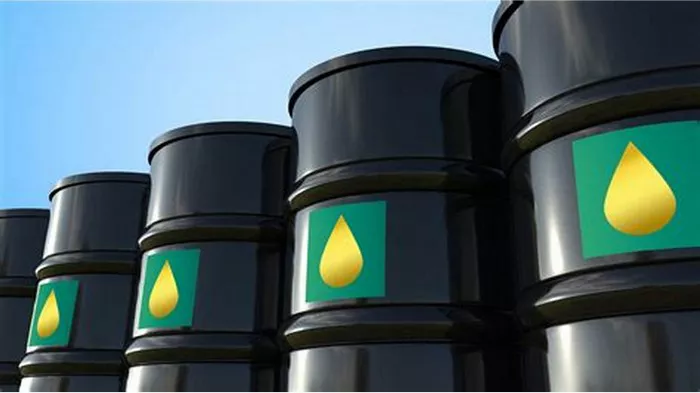Crude oil is a complex mixture of hydrocarbons that varies greatly in its composition depending on its source. It is the raw material that is refined to produce gasoline, diesel, jet fuel, and other petroleum products. Understanding the different types of crude oil is essential for anyone involved in the energy sector, including investors, traders, and policymakers. This article will explore the various types of crude oil, their characteristics, and their significance in the global energy market.
What Is Crude Oil?
Crude oil is a naturally occurring, unrefined petroleum product composed of hydrocarbon deposits and other organic materials. It is a fossil fuel that can be refined into usable products such as gasoline, diesel, and other forms of petrochemicals. The different types of crude oil are classified based on their physical properties, which affect their value and the ease with which they can be refined.
Key Characteristics of Crude Oil
Crude oil is typically classified according to three key characteristics:
Density (or Specific Gravity): This refers to the heaviness of the oil in comparison to water. Crude oil can be light, medium, or heavy. Light crude oils have a higher percentage of light hydrocarbons and are easier to refine, making them more valuable. Heavy crudes, on the other hand, are denser and contain more complex molecules, which are harder to break down during refining.
Sulfur Content: Crude oil is also classified based on its sulfur content. Sweet crude contains less than 0.5% sulfur, making it more desirable because it is easier to refine and produces fewer pollutants. Sour crude contains more than 0.5% sulfur and requires more processing to remove the sulfur.
Geographical Origin: The location where crude oil is extracted also plays a role in its classification. Different regions produce oil with varying compositions, and the geographic origin often influences the price and demand for a particular type of crude oil.
See Also: 5 Plastics Made from Crude Oil
Major Types of Crude Oil
There are numerous types of crude oil, each with its unique properties. However, most of the world’s crude oil is benchmarked against a few major types. These benchmarks serve as reference points for pricing and trading crude oil globally.
1. Brent Crude
Brent Crude is one of the most important global oil benchmarks, originating from the North Sea. It is considered a light and sweet crude oil, with a relatively low density and sulfur content. Brent Crude is used to price approximately two-thirds of the world’s internationally traded crude oil supplies. Its significance in the global market is due to its stability and accessibility, as well as its role in pricing many other crude oil blends.
2. West Texas Intermediate (WTI)
West Texas Intermediate, or WTI, is another key benchmark used primarily in the United States. It is a very light and sweet crude oil, making it highly desirable for producing gasoline and other high-value products. WTI is often used as the benchmark for oil prices in North America and is traded on the New York Mercantile Exchange (NYMEX). WTI’s importance stems from its high quality and the fact that it is produced and refined in the U.S., the largest consumer of oil in the world.
3. Dubai Crude
Dubai Crude is a light sour crude oil extracted from the Persian Gulf. It is used as a benchmark for pricing oil exports from the Middle East to Asia. Although it has a higher sulfur content than Brent or WTI, it is still a crucial marker for the Asian markets. Dubai Crude is important because it reflects the quality and availability of crude oil from the Middle East, a region that holds a significant portion of the world’s oil reserves.
4. OPEC Reference Basket
The OPEC Reference Basket is a weighted average of various crude oils produced by the member countries of the Organization of the Petroleum Exporting Countries (OPEC). It includes a mix of light and heavy crude oils, with varying sulfur contents. The OPEC Basket provides a broad representation of the oil produced by the cartel and is used to monitor the stability of the oil market.
5. Urals
Urals is a type of crude oil that is a blend of heavy sour crudes from Russia. It is a key export grade for Russian oil and is often used as a benchmark for oil prices in Europe. Due to its heavier and more sulfurous nature, Urals crude typically trades at a discount compared to Brent and WTI. However, it remains a significant component of the global oil supply, particularly in Europe.
6. Bonny Light
Bonny Light is a high-quality crude oil from Nigeria. It is light and sweet, with low sulfur content, making it highly sought after for the production of gasoline and diesel. Bonny Light is used as a benchmark for other West African crudes and plays a significant role in the European and Asian markets. Its significance lies in its quality and the strategic location of Nigeria, which is one of the largest oil producers in Africa.
Other Notable Types of Crude Oil
While the benchmarks mentioned above are the most widely recognized, there are many other types of crude oil that are important in specific regions or for certain markets. Some of these include:
7. Arab Light
Arab Light is a major export grade from Saudi Arabia, one of the world’s largest oil producers. It is a medium-light crude with moderate sulfur content, making it a versatile grade that can be refined into a wide range of products. Arab Light is particularly significant because of Saudi Arabia’s influence on global oil markets and its role as a swing producer.
8. Basrah Light and Basrah Heavy
These two types of crude oil come from Iraq, another major oil producer in the Middle East. Basrah Light is a medium-light crude with relatively low sulfur content, while Basrah Heavy is denser and more sulfurous. Both grades are important in the Asian and European markets, where they are often blended with other crudes to meet refinery requirements.
9. Canadian Oil Sands
The oil sands in Canada produce a type of heavy crude oil known as bitumen. This crude is extremely dense and requires significant processing to be converted into synthetic crude oil (SCO) or other products. While Canadian oil sands crude is among the most carbon-intensive to produce, it remains a crucial component of North America’s energy supply.
10. Merey
Merey is a heavy, sour crude oil from Venezuela. It is one of the primary export grades from the country and is typically blended with lighter crudes to make it more suitable for refining. Merey crude is significant in the global market, particularly in the Americas, despite the challenges posed by its heavy and sulfurous nature.
The Importance of Crude Oil Types in the Global Market
Understanding the different types of crude oil is essential for several reasons. Each type of crude oil has different refining requirements, market demand, and pricing implications. Light, sweet crudes like Brent and WTI are more valuable because they are easier to refine into high-demand products like gasoline and diesel. Heavy, sour crudes, while more challenging to refine, are still important in markets where complex refining capacity exists.
Pricing Dynamics
The price of crude oil is influenced by its quality, with lighter and sweeter crudes generally commanding higher prices.
However, supply and demand dynamics, geopolitical factors, and production costs also play significant roles in determining prices. Benchmark prices like Brent and WTI serve as references for other crude oils, which are often priced at a discount or premium depending on their characteristics.
Geopolitical Implications
The geographic origin of crude oil is also crucial because it affects the security of supply and the stability of prices. Countries that produce large quantities of high-quality crude oil have significant influence in the global energy market. Conversely, reliance on heavy, sour crudes from politically unstable regions can lead to volatility in supply and prices.
Conclusion
There are many types of crude oil, each with unique properties that affect its value, refining process, and market demand. Major benchmarks like Brent, WTI, and Dubai Crude play critical roles in the global oil market, serving as reference points for pricing and trading. Understanding the different types of crude oil and their characteristics is essential for anyone involved in the energy sector, from investors and traders to policymakers and consumers. As the energy landscape continues to evolve, the diversity of crude oil types will remain a key factor in shaping global markets.
[inline_related_posts title=”You Might Be Interested In” title_align=”left” style=”list” number=”3″ align=”none” ids=”3208,3135,3128″ by=”categories” orderby=”rand” order=”DESC” hide_thumb=”no” thumb_right=”no” views=”no” date=”yes” grid_columns=”2″ post_type=”” tax=””]
































